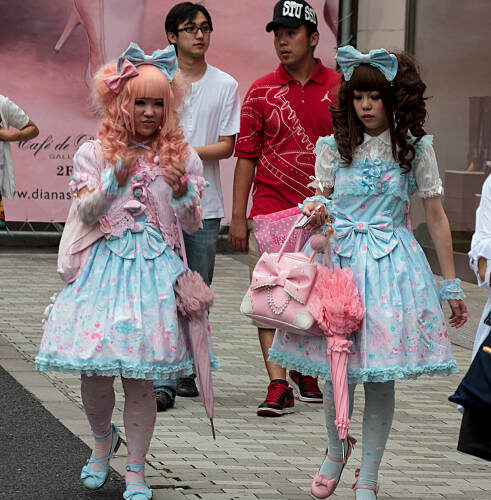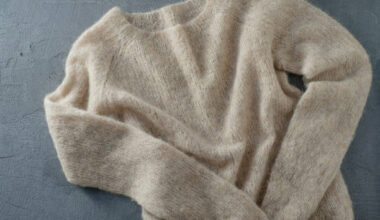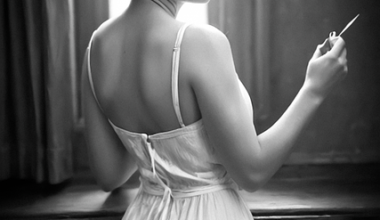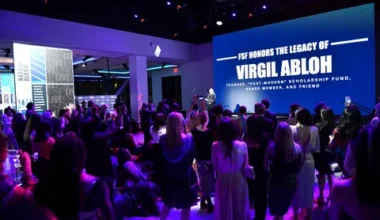Fashion fans around the world have been enthralled with the peculiar blend of Victorian and Rococo-inspired aesthetics mixed with a dash of contemporary flair that is Lolita fashion, a unique subculture that originated in Japan. The intricate gowns, petticoats, bows, and lace that define Lolita fashion are symbols of creativity, self-expression, and a respect for beauty. Lolita fashion is more than just a fashion trend. This article delves into the captivating realm of Lolita fashion, examining its historical roots, examining its diverse substyles, and revealing the charm that captivates fans worldwide.
Origins and Evolution
In Japan, Lolita fashion first appeared in the late 1970s and early 1980s as a defiant reaction to prevailing fashion trends. Fashion lovers from Lolita were inspired by Victorian-era attire as it was portrayed in literature, art, and historical fashion. Their goal was to create a look that embraced individualism, modesty, and femininity. The word “Lolita” itself comes from the same-titled novel by Vladimir Nabokov, even though the fashion subculture has nothing in common with the book’s controversial issues.
Lolita fashion has changed and broadened over the years, drawing inspiration from a range of historical eras, subcultures, and international fashion trends. These days, it includes a broad range of substyles, each of which has unique qualities and aesthetics that appeal to a variety of community interests and preferences.
Substyles
- Sweet Lolita: Sweet Lolita is all pastel colors, adorable bows and ribbons, and wacky accessories like jewelry with confectionery themes and plush animals. She also radiates innocence and fun.
- Gothic Lolita: Gothic Lolita is known for its darker, more gothic-inspired style, with gowns that are mostly black or dark colored and embellished with lace, crosses, and other eerie details. It typically lends a hint of mystery and elegance to the Lolita fashion scene, drawing inspiration from Victorian mourning garments.
- Classic Lolita: Taking cues from historical costumes and vintage fashion, classic Lolita epitomizes ageless elegance and grace. This substyle is defined by elegant forms, delicate detailing, and neutral color schemes that convey a feeling of grace and nostalgia.
- Punk Lolita: Punk Lolita is a distinctive blend of femininity and rebelliousness that combines elements of punk fashion with Lolita’s whimsical style. It makes a statement by matching traditional Lolita dresses with edgier ornaments like safety pins, studs, and chains.
- Wa Lolita: Wa Lolita, often called Kimono Lolita, combines the Lolita silhouette with traditional Japanese accessories including obi belts, wooden sandals (geta), and kimono textiles. This subgenre offers a modern take on Lolita attire while honoring Japan’s rich cultural past.
Community and Culture
In addition to being aesthetically pleasing, Lolita apparel encourages a sense of solidarity and community among fans. Lolita’s communicate with like-minded people through meet-ups, conventions, and online forums. They share styling advice, talk about current fashion trends, and celebrate their shared love of the subculture. The exposure of Lolita fashion has also been greatly increased by social media sites like Instagram and Tumblr, which enable fans to share their originality and serve as an inspiration to people worldwide.
Why is it called Lolita style?
The 1955 novel “Lolita” by Vladimir Nabokov is the source of the term “Lolita style” or “Lolita fashion”. It’s crucial to remember, though, that the novel’s ideas and content have little to do with the fashion subculture itself.
The protagonist of the book “Lolita” is a middle-aged literature professor who becomes fixated on Dolores Haze, a twelve-year-old girl, and goes by the moniker “Lolita.” In the context of the book, the term “Lolita” has come to refer to a young girl who is sexually precocious or appealing to older males, frequently in an unsettling or predatory way.
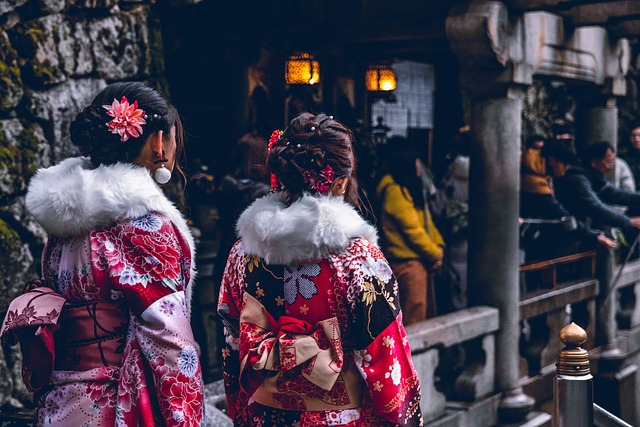
The name itself is the primary link between the literature and the fashion subculture. The name “Lolita” is thought to have been coined by Japanese fashion lovers to characterize their style since it evokes feelings of delicacy and innocence. But it’s important to stress that Lolita fashion emphasizes modesty, elegance, and self-expression through clothing that draws inspiration from historical and cultural figures rather than sexualizing young girls.
Why do people wear Lolita?
There are many different reasons why people wear Lolita clothing, from cultural appreciation and community involvement to self-expression. The following are some typical reasons why people decide to wear Lolita fashion:
Self-Expression
Like other forms of fashion, Lolita enables people to use their clothes as a creative outlet. Wearing Lolita allows people to express their distinct sense of style and individuality, whether they are drawn to the timeless appeal of Classic Lolita, the dark elegance of Gothic Lolita, or the whimsical and romantic aesthetic of Sweet Lolita.
Escapism
Many fans choose Lolita attire as a way to escape from the stresses and hardships of daily life. People might briefly escape the ordinary and enjoy a sense of whimsy and enchantment by losing themselves in a fantasy world that is defined by frills, lace, and ornate accessories.
Cultural Appreciation
Historical and cultural clothing aspects, such Victorian-era clothing or traditional Japanese kimono textiles, are frequently incorporated into Lolita fashion. Some wearers view adopting Lolita attire as a means of honoring these cultural influences and celebrating their artistry and beauty.
Community and Socializing
Strong solidarity and inclusivity are hallmarks of the Lolita community. Those who are passionate about fashion subculture can meet others who share their interests, exchange styling advice, and develop connections through meet-ups, conventions, and online forums.
Empowerment
Wearers of Lolita clothes can feel empowered despite its humble look. When people choose to dress differently from what is considered mainstream, they are challenging conventional notions of femininity and beauty and asserting their independence. In a society that frequently values conformity, Lolita fashion empowers people to embrace their individuality and boldly declare who they are.
Many things considered, there are many reasons why people choose to wear Lolita clothing, many of which are very unique and significant to the user. Lolita fashion continues to enthrall and inspire lovers worldwide, whether it’s as a means of self-expression, a way to appreciate culture, or a chance to interact with others in a lively community.
What’s another name for Lolita fashion?
The overall concept of grace and whimsy is given a distinctive twist by each Lolita style variation. Below is a quick synopsis of every substyle that was mentioned:
- Gothic Lolita: This subgenre blends Gothic and classic Lolita fashion components. It features darker color schemes, clothing with Victoriana inspirations, and morbid motifs like bats and crosses.
- Sweet Lolita: Sweet Lolita is the epitome of a carefree, young style, with lots of frills, bows, and lace, pastel colors, and whimsical patterns including animals, candies, and flowers.
- Hime (or Princess) Lolita: Hime Lolita’s lavish designs, which include regal themes, pricey textiles, and exquisite forms, are influenced by the extravagant princess fashion. To convey a feeling of regal refinement, crowns, tiaras, and elaborate decorations are frequently used.
- Punk Lolita: Punk Lolita creates a striking and edgy look by fusing the rebellious spirit of punk fashion with the delicate elegance of Lolita. It combines accessories like safety pins, chains, and studs with flowy dresses and petticoats to create a distinctive blend of styles.
Lolita fans can express themselves artistically through any of these variations while adhering to the fundamental values of humility, elegance, and originality. Within the fascinating realm of Lolita fashion, wearers can discover a substyle that speaks to their individual likes and preferences, whether they choose to embrace the dark appeal of Gothic Lolita, the syrupy sweetness of Sweet Lolita, the regal majesty of Hime Lolita, or the rebellious energy of Punk Lolita.
What is the difference between Gothic and Lolita?
Although there are occasionally some similarities between Gothic and Lolita fashion, the main distinction between the two styles is their respective artistic and cultural influences. Below is an explanation of each:
Gothic Fashion
- Aesthetic: Gothic literature, architecture, and subcultures serve as sources of inspiration for Gothic fashion, which usually embraces gloomy and horrific themes. It frequently has dramatic silhouettes, lace, leather, corsets, and black apparel.
- Influences: Gothic style is influenced by parts of punk and fetish fashion, as well as fashions from the Victorian, Edwardian, and medieval eras.
- Attitude: Gothic style frequently reflects a rebellious, self-reflective, and romantic mindset. It honors uniqueness, nonconformity, and an interest in the paranormal and unknown.
Lolita Fashion
- Aesthetic: On the other side, doll-like, romantic, and whimsical aesthetics define Lolita fashion. It features ornate dresses, petticoats, frills, bows, and lace in pastel or subdued color schemes, emphasizing modesty, femininity, and elegance.
- Influences: Victorian and Rococo designs, together with other historical and cultural elements, are the main sources of inspiration for Lolita fashion. It combines nostalgic, innocent, and fantastical qualities, frequently conjuring up images of porcelain dolls or characters from books.
- Attitude: A feeling of grace, gentility, and refinement are encouraged by Lolita fashion. It displays a respect for custom and manners while also allowing for individual expression and originality. It also follows certain rules regarding modesty and propriety.
Why are Lolita clothes so expensive?
Lolita apparel can be pricey for a number of reasons, such as:
- Quality Materials: A lot of Lolita clothing is made from premium fabrics like satin, lace, silk, and cotton. Because these materials are more durable, comfortable, and have an upscale feel, they are frequently more expensive.
- Attention to Detail: The exquisite details found in Lolita fashion, such as the delicate needlework, intricate lacework, and hand-sewn decorations, are well-known. These clothes are more expensive because of the skill and care that go into making them.
- Limited Production: Because their designs are unique, some Lolita brands make their clothing in small batches or custom orders, which drives up the cost. Further raising the price is the possibility that smaller independent firms or craftspeople will manually handcraft each piece.
- Import Costs: Originating from Japan, where labor, production, and import fees can be more expensive than in other places, is where many Lolita brands are found. These clothing imports might result in higher costs, which are frequently on to customers.
- Brand Prestige: Some Lolita companies are more well-known and prestigious in the community, and as a result, their products fetch greater costs. Popularity, history, and brand reputation can all affect how much people think the clothes are worth.
- Customization and Sizing: Certain Lolita brands allow for customization or accommodate non-standard sizing, which could lead to greater costs for customized or bespoke clothing due to the need for more labor and resources.
What are the symbols of Lolita fashion?
A variety of symbols and motifs are used into Lolita fashion, adding to its unique aesthetic and cultural value. Themes of femininity, innocence, nostalgia, and imagination are frequently reflected in these symbols. The following are some typical emblems of Lolita fashion:
- Bows: One of the most recognizable elements of Lolita attire is definitely bows. They embellish headdresses, shirts, dresses, and accessories, giving the whole ensemble a whimsical, feminine touch. Bows are available in a variety of shapes and sizes, from bold bows to delicate ribbon bows.
Lace A staple of Lolita fashion, lace is distinguished by its delicate and elaborate appearance. It is typically used to provide elegance and a romantic touch to garments by adorning collars, cuffs, hemlines, and other areas. The texture of lace can differ, ranging from intricate Venetian lace patterns to delicate Chantilly lace.
- Ribbons: Ribbons are another popular adornment in Lolita clothing, similar to bows. They are used to draw attention to waistlines, secure hair, adorn shoes, and embellish clothing with flourishes. Ribbons offer countless design options because they are available in an array of hues, widths, and textures.
- ruffles: A common element of Lolita clothing is ruffles, which add to the layered, voluminous appearance of many outfits. They add a touch of softness and femininity to bodices, sleeves, collars, and skirts. Ruffles give dimension and texture to an ensemble by varying from delicate gathers to spectacular cascades.
- Headdresses: Headdresses are a common item in Lolita fashion, frequently embellished with bows, ribbons, flowers, or lace. They complete haircuts and go well with the overall idea of the ensemble, acting as ornamental and functional accents.
- Prints: Whimsical designs influenced by fairy tales, fantasy realms, nature, and cultural elements are frequently seen in lolita fashion. Animals, flowers, sweets, tea parties, and historical sites are popular print topics. These prints give clothes character and charm while letting users show their hobbies and creativity.
- cameos: Cameos are a staple of Lolita apparel, usually showcasing delicate images or silhouettes. They embellish necklaces, brooches, and earrings, giving the ensemble a hint of sophistication and classic elegance.
- Parasols: In addition to being useful sun protection accessories, parasols are also recognizable as hallmarks of Lolita style. Parasols, adorned with lace, ribbons, and elaborate patterns, lend a touch of refinement and passion to outdoor celebrations and get-togethers.
In summary: Lolita fashion
More than just clothes, Lolita fashion is a kind of self-expression, an appreciation of beauty, and a reminder of the timeless appeal of uniqueness and inventiveness. Fashion aficionados throughout the world are captivated by Lolita’s because they exude a sense of elegance and whimsy that cuts across cultural barriers, whether they are wrapped in lace and ruffles or covered with frills and bows. Lolita fashion is a timeless tribute to the transformational power of style and the power of imagination in a world where fads come and go.
